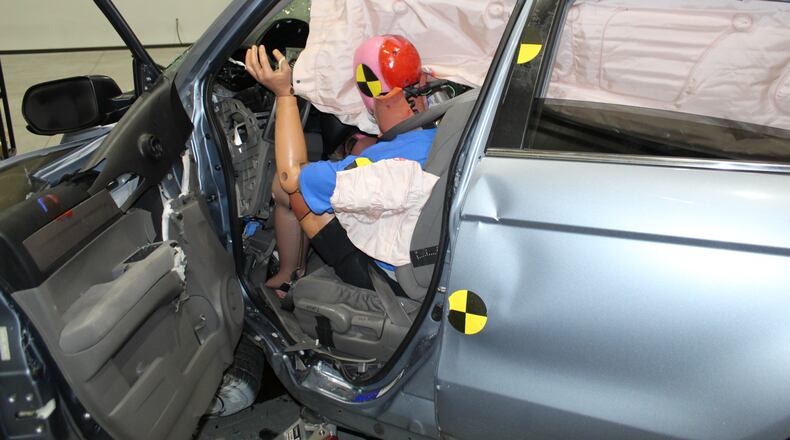Drivers often travel faster than posted speed limits, but when officials raise limits to match travel speeds, people still go faster. Today, 41 states allow 70 mph or higher speeds on some roadways, including eight states that have maximum speeds of 80 mph or more. A 2019 IIHS study found that rising speed limits have cost nearly 37,000 lives over 25 years. AAA and IIHS urge policymakers to factor in this danger from higher speeds when considering speed limit changes.
The AAA Foundation collaborated with IIHS and Humanetics to examine how speed affects the likelihood and severity of occupant injury in a crash. Three 2010 Honda CR-V EX crossovers were used because they represented the average age (11.8 years) of a typical vehicle on U.S. roadways and earned the top rating in the IIHS moderate overlap front test. Calspan Corporation conducted all the tests in its crash laboratory in Buffalo, New York.
As the crash speed increased in the tests, researchers found more structural damage and greater forces on the dummy’s entire body.
“Higher speed limits cancel out the benefits of vehicle safety improvements like airbags and improved structural designs,” said Dr. David Harkey, IIHS president. “The faster a driver is going before a crash, the less likely it is that they’ll be able to get down to a survivable speed even if they have a chance to brake before impact.”
At the 40 mph impact speed, there was minimal intrusion into the driver’s space. But at the 50 mph impact speed, there was noticeable deformation of the driver side door opening, dashboard and foot area. At 56 mph, the vehicle interior was significantly compromised, with the dummy’s sensors registering severe neck injuries and a likelihood of fractures to the long bones in the lower leg.
“Our crash test dummies are instrumented with hundreds of sensors to measure the injury risk so that we understand the scientific limits of safety and injury prevention. Understanding that the risk of serious and permanent injury becomes significantly higher in crashes beyond statutory speed limits clearly demonstrates why there are limits in the first place,” commented Jack Jensen, vice president of engineering at Humanetics.
At both 50 and 56 mph, the steering wheel’s upward movement caused the dummy’s head to go through the deployed airbag. This caused the face to smash into the steering wheel. Measurements taken from the dummy showed a high risk of facial fractures and severe brain injury.
When correctly set and enforced, speed limits improve traffic flow and maximize all public road users’ safety.
“Cars are safer than they’ve ever been, but nobody’s figured out how to make them defy the laws of physics,” said Harkey of IIHS. “Rather than raising speed limits, states should vigorously enforce the limits they have. This includes using proven countermeasures like high-visibility enforcement and carefully implemented speed-camera programs to consistently and equitably enforce speed limits 24/7.”
Speed limits should not be raised or lowered only to manipulate traffic volume on a particular roadway. States are urged to use engineering and traffic surveys when setting maximum speed limits.
“Policymakers need to also think beyond enforcement to control speeds and should consider infrastructure changes based on road type to calm traffic flow appropriately so that posted speed limits are followed,” said Jake Nelson, AAA director of traffic safety advocacy and research.
This study is the second part of the AAA Foundation for Traffic Safety research examining the effect of posted speed limit changes on safety. In the Foundation’s first study, traffic engineers were asked how posted speed limits are set and what factors they consider in changing them.
About the research testing: The research tests were conducted following the same protocol that is used for the IIHS moderate overlap evaluation; only the speed was varied. With a test dummy representing an average-sized male in the driver’s seat, the cars were crashed with 40 percent of the vehicle’s front on the driver side overlapping the barrier.
IIHS has been conducting this type of test, which simulates a head-on, partial-overlap impact between two vehicles of the same weight and size traveling at the same speed, since 1995. Since 2013, 100 percent of new vehicles have earned a good rating when tested at the 40 mph impact speed.
About the Author
